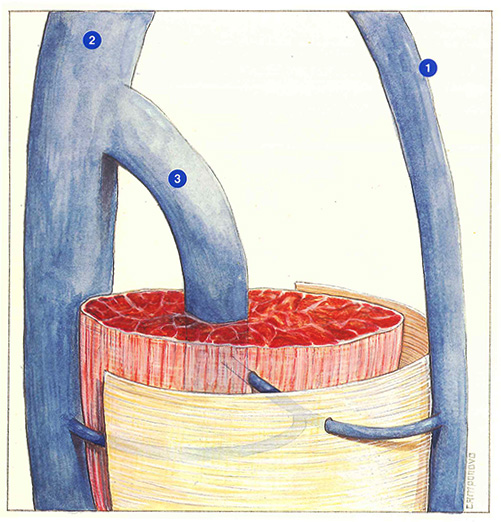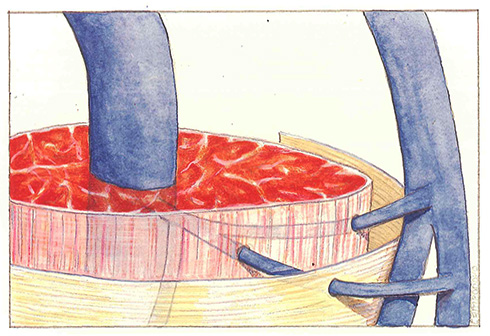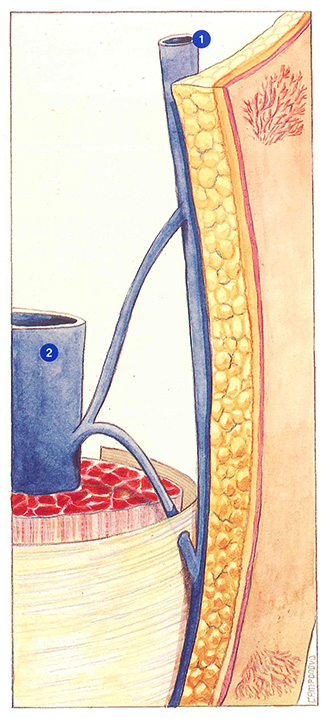Anatomical definition
It might seem surprising to study the perforating veins before describing the veins of the long saphenous territory, but this approach is based on comparison of anatomical and functional data. It is therefore, logical to present the perforating veins just after studying the saphenofemoral junction, which actually corresponds to the most proximally situated principal perforating vein.
As their name suggests, perforating veins, which ensure communication between superficial veins and the deep network, perforate the muscular aponeurosis. Just like the saphenous veins or pelvic veins, each of these perforating veins can constitute a pathway of reflux from the deep network to the superficial network.
There are numerous perforating veins: 80 to 140 in each lower limb. Their diameter does not normally exceed 2 mm. They possess at least two bicuspid valves, situated in the sub-aponeurotic portion of their course.
Ultrasonography only visualizes perforating veins greater than 2 mm in diameter. However, it is essential to remember that this possible increase in caliber does not necessarily indicate incompetence of the perforating vein.
As the ultrasonographic image is primarily dynamic, these vessels have a variable ultrasonographic appearance. The perforating vein is sometimes visualized over its entire course, plunging into a muscle or traveling along the edge of the muscle (Figure 46). More generally, it can be seen on several transverse sections during scanning of the transducer.
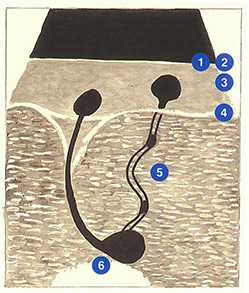
Perforating veins may have multiple branches. For example, a superficial vein is sometimes connected to two deep venous trunks (Figure 47).
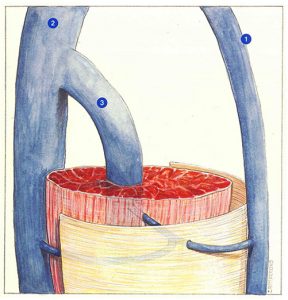
Inversely, a deep venous trunk can communicate with two superficial veins (Figure 48). Furthermore, longitudinal intramuscular anastomoses are sometimes established between the various perforating veins. The complexity of these connections easily accounts for the difficulties encountered in classical perforating vein surgery.
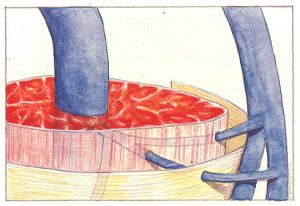
Finally, some perforating veins ascend inside the muscle. Ascending reflux could therefore occur in the case of excess pressure in the deep venous network. An overload of the intradermal network will be reflected by varicosities situated over the anastomosis of this perforating vein. In general, these varicosities are centered around their feeding vein, usually a subcutaneous venule. However, they can sometimes be supplied by a descending perforating vein, in which case the varicosities will converge upwards, or by an ascending perforating vein, in which case the varicosities will converge downwards (Figure 49).
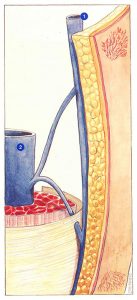
Further reading
Davy A. L’anatomie normale des membres inférieurs, in “Les Varices”. Expansion Scientifique Française, Paris, 1974.
Gillot Cl. Anatomie chirurgicale des perforantes de la jambe. Phlébologie 1987, 40, 3 : 563-74.
May R., Partsch H., Staubesand J. Venae perforantes. Urban und Schwarzenberg, München 1981.
